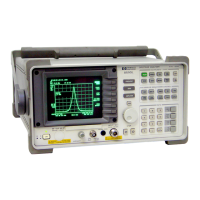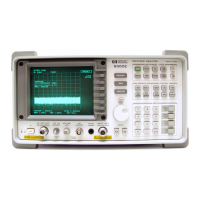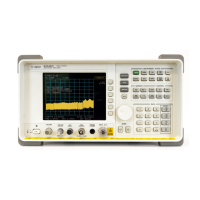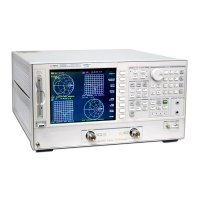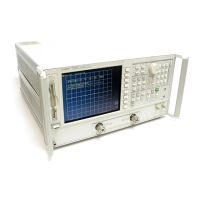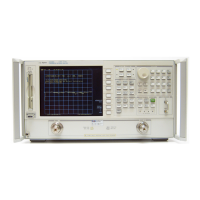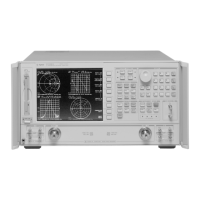To measure signal paths
This task shows you how to use the equalization filter’s impulse response
to identify and measure paths in a multi-path signal. This task uses the
multi-path signal on the Signals Disk and is a continuation of the previous
task.
1. Perform the previous task.
2. Configure the display to show the impulse response of the equalization filter in
a single grid:
Press [B], [Display], [single grid].
3. Change the x-axis units to seconds:
Press [
Ref Lvl/Scale], [X & Y units setup], [X units], [s].
4. Display bars at the symbol locations:
Press [
Data Format], [more format setup], [symbol bars].
5. Move the marker to the peak impulse (this is the main signal path):
Press [
Shift], [Marker].
The marker readout shows the main impulse at 0 seconds with
approximately 0 dB of loss.
6. Move the marker to the next peak (this is the second signal path):
Press [
Marker Search], [next peak].
The marker readout shows the second signal path at
− 800 ns with
approximately 15 dB of loss relative to the main impulse (the strongest
path).
7. Move the marker to the next peak (this is the third signal path):
Press [
next peak] again.
The marker readout shows the third signal path at
3 µ s with
approximately 20 dB of loss.
The impulse response in this example shows several peaks. The three
highest peaks correspond to the main signal path plus two multi-path
signals. The remaining peaks correspond to the two multi-path signals, as
described in the next paragraph.
Using Adaptive Equalization (Options AYA and AYH)
12-8
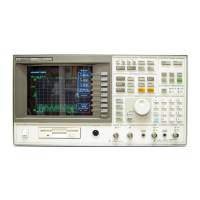
